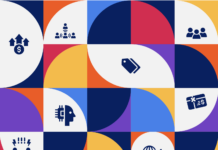 Top-performing companies motivate employees with incentive travel and gift cards more frequently than lower performers, according to new research from the IRF.
Top-performing companies motivate employees with incentive travel and gift cards more frequently than lower performers, according to new research from the IRF.
Top-performing companies use a variety of rewards to recruit, retain and motivate their employees, but two they use more frequently are incentive travel and gift cards, according to a new white paper from the Incentive Research Foundation (IRF) and Insperity. It also found that non-cash incentives are most effective for enhancing employee performance and business results. The study, called Driving Growth Through Total Rewards, analyzed how Top-performing companies design and manage their total rewards packages to maximize employee performance.
The study looked at several parameters, including organizational performance, culture and talent recruitment and retention, and the key outcomes each individual rewards component tends to drive. It also broke down its results by specific industry: professional services, health, retail, finance, technology and manufacturing.
Among the top insights from the white paper:
- Non-cash rewards and recognition are key to reinforcing behaviors that drive business results. These companies also allow each department to determine budgets for non-cash rewards and recognition to ensure these motivators are correctly directed toward their key business outcomes.
- Top-performing companies most frequently use incentive travel and gift cards. While these top companies may reward fewer employees with travel incentives and gift cards, their average per-employee spend is higher than standard-performing companies — on average budgeting $1,500 per employee, compared to $915 for standard-performing companies. This is particularly true for sales employees: Top-performing companies averaged $1,500 per sales employee, where standard-performing companies averaged $820 each for their salespeople.
- Top-performing companies use base compensation to recruit new talent, and they are sure to communicate the total rewards available both during the recruitment process and during annual reviews to help retain employees. Top-performing companies consistently communicated their total rewards strategy and package more throughout the employment cycle — recruitment, onboarding and annual reviews — than standard-performing companies.
Industry-Specific Insights
In the industry-specific section, the white paper outlined a few differentiators in different business sectors.
Professional Services: Top performers in this industry were more likely to communicate their total rewards strategy than those in most other industry sectors — 89% do it at least once. They also are much more likely to use non-cash rewards to drive business results, and to provide higher reward levels — $2,215 per employee, compared to $1,500 among standard performing companies.
Health: Top-performinghealth companies also were big on communicating their rewards strategy, with 91% doing it at least once. They also out-spend standard performers with an average of $2,900, compared to just $300 per employee.
Retail: While they don’t tend to talk about their total rewards strategies as much in retail as in other industry sectors, almost half do communicate the strategies during annual reviews. They also are more likely than other sectors to use non-cash rewards, though those rewards tend to be lower per employee.
Finance: Top-performing finance companies tend to emphasize total rewards during onboarding more than standard-performers in their sector, though there is no measurable difference between top performers and standard performers in the proportion of employees who receive non-cash rewards.
Technology: Top-performing tech companies reward significantly fewer of their employees with non-cash rewards (24%, as opposed to 40% for standard performing tech companies).
Manufacturing: The number of employees who are rewarded in top-performing manufacturers are fewer than in standard-performing manufacturers (25% versus 35%), but those they do reward get an average of about $600, compared to just $150 for standard-performing companies in this sector.
One interesting result of the study was that overall, both top performers and standard performers tend to use less than 40% of their non-cash budgets. The report concludes, “With the market’s clear acknowledgement of the impact these programs have, program owners and designers should direct their attention to optimizing the design, engagement, and utilization of these business tools.”
You May Also Be Interested In…
7 Ways AI Already Is Helping Incentive Planners
Incentive Qualifiers Rank Group Trips as Top Motivator in IRF Study










